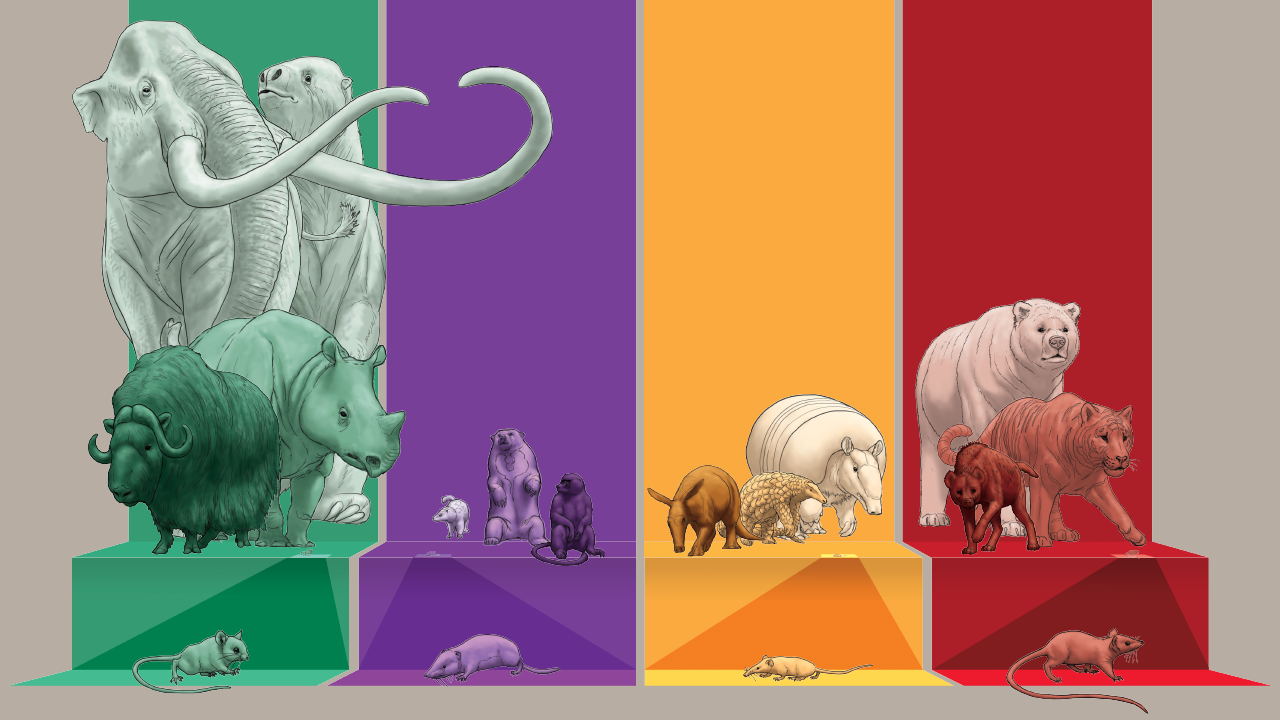Human exterminations of large animals ‘disrupting millions of years of natural balance’
Sizes of herbivores and omnivores have plummeted roughly 100-fold since the emergence of Neanderthals and Homo sapiens

Humans’ propensity to kill large mammals from plant-eating herbivores to meat-eating carnivores is resulting in losses of species from both groups, a study says.
It may also be "fundamentally" altering a natural balance which dictates how animals derive energy from food, and therefore, their size, it has been warned.
Researchers say humans’ rapid disruption of this natural order could have "potentially unpredictable consequences".
The median sizes of herbivores and omnivores have plummeted roughly 100-fold since the emergence of Neanderthals and Homo sapiens over the past few hundred thousand years, the team said, with the size of carnivores dropping by about 10 times in that same span.
“We’re not sure what’s going to happen, because this hasn’t happened before,” said Will Gearty, a postdoctoral researcher at Nebraska and co-author of the study.
“But because the systems have been in what seems to be a very steady state for a very long time, it’s concerning what might happen when they leave that state,” he said.
Species’ entire evolutionary and ecological histories can be told in part through the influences of diet and size, Dr Gearty said.
A species’ diet determines its energy consumption, which in turn drives growth and ultimately helps dictate its size. Yet that size can also limit the quality and quantity of food available to a species, even as it dictates the quality and quantity needed to survive.
“You can be as big as your food will allow you to be,” Dr Gearty said. “At the same time, you’re often as big as you need to be to catch and process your food. So there’s an evolutionary interplay there.”
The study noted that because the plant-based diet of herbivores is relatively poor in nutrition, they often grow massive for the sake of covering more ground to forage for more food, and have evolved long, complex digestive tracts that extract maximum nutrients from their food.
Meanwhile carnivores must grow large enough to both keep up with and take down those herbivores.
Though the "buffet-style menu" of omnivores usually keeps their stomachs full, their high energy demands generally leave them focusing on nuts, insects and other small, energy-dense foods.
Finally, while invertivores enjoy mostly protein-rich prey, the diminutive nature of that prey, combined with stiff competition from many other invertivores, relegates them to the smallest sizes of all.
The study asks readers to imagine a U-shaped curve on a graph, in which the y-axis is mammal size, and the x-axis is a plant-to-protein gradient (herbivorous animals on the left, meat eaters to the right, and omnivores and invertebrate-feasting invertivores in the middle).
So marking the top left of the U shape might be an elephant, or woolly mammoth, then the line goes down to a small animal such as a nut and insect eating monkey, and along to an ant eater, for example, and then up again to the top right hand side of the U shape with huge meat eating animals like tigers and polar bears.
With this U-shaped pattern in mind, the emergence of humans and their ability to exterminate any species means natural distribution is being upended for the first time.
This pattern is replicated across various biomes from forests or grasslands to. deserts, and from the tropical Atlantic Ocean to the temperate North Pacific.
Researchers said the pattern was absent in marine mammals and seabirds, probably due to the unique demands of living in water.
“Showing that this exists across all these different groups does suggest that it is something fundamental about how vertebrates acquire energy, how they interact with one another, and how they coexist,” said co-author Kate Lyons, assistant professor of biological sciences at Nebraska.
Looking at the future, the researchers said humans are now flattening the U-curve, with the pattern showing that we are on course to kill off some of the largest remaining species – including the tiger and the Javan rhino.
These changes could have major ramifications for ecosystems.
“It’s certainly possible that as we take some of these animals off the top (of the U-curve), and as we collapse some of these ranges of body sizes, that we’re altering the way the energy is divvied up,” Dr Gearty said.
“That could perhaps have fundamental repercussions for the environment and ecosystems as a whole.”
It’s also possible, the researchers said, that the forthcoming decline in mammal body sizes could outpace even the unprecedented drop observed over the past few hundred thousand years.
“You keep seeing, in ecological literature, people speculating about how ecosystems are less stable now, and less resilient, and more prone to collapse,” Dr Lyons said.
“I think this is just another line of evidence suggesting that that may indeed be the case in the future.”
The research is in the journal Nature Ecology and Evolution.
Subscribe to Independent Premium to bookmark this article
Want to bookmark your favourite articles and stories to read or reference later? Start your Independent Premium subscription today.

Join our commenting forum
Join thought-provoking conversations, follow other Independent readers and see their replies